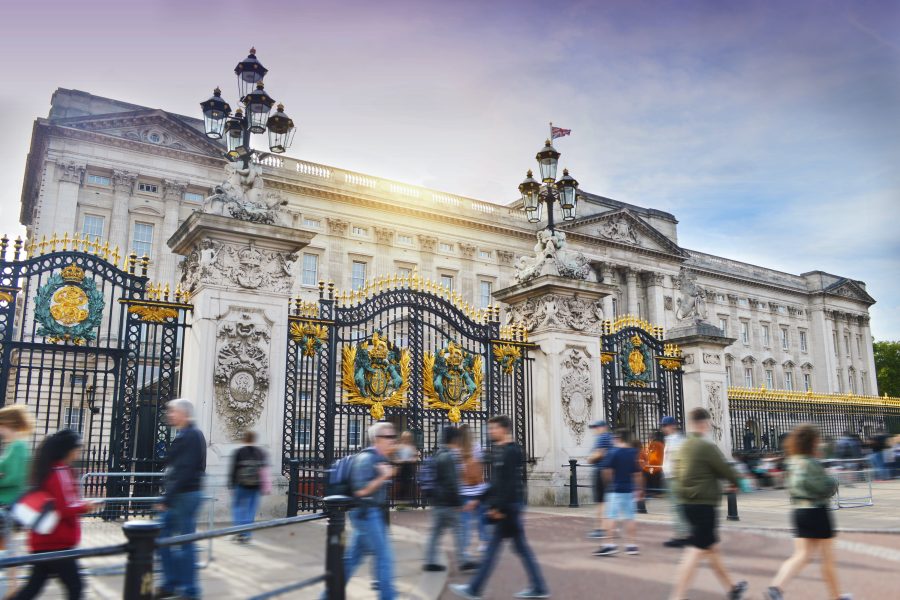9th September 2022 By Contributor
The Queen may have passed but royalty’s influence on British tourism remains undimmed, or so a column written in 2017 for The Conversation argues. We have republished it today as a reminder of the pulling power of UK royalty.

The spectacle of royal events and access to parts of the royal estate enables national tourism agencies to build on their appeal, writes Claire Haven-Tang from Cardiff Metropolitan University.
The royals draw millions of tourists every year – The Daily Mail, November 20, 2017.
The Royal family are so important for tourism in London – A spokesperson for VisitBritain, quoted in the International Business Times, November 27, 2017.
Regardless of whether you are a royalist or not, the royal family undeniably attracts public interest around the UK and internationally. Visits and tours by the royals generate extensive media attention – as well as tourists.
Love it or hate it, the pomp and pageantry associated with British royalty, whether routine events such as Trooping the Colour or anniversaries such as the Queen’s Diamond Jubilee in 2012, are rarely found in any other country. These public ceremonies, in addition to parts of the estates owned by the royal family, are important in attracting tourists.
When Prince William married Kate Middleton in April 2011, the UK’s Association of Leading Visitor Attractions claimed it:
“Saw an additional 600,000 people come to London for the weekend, 60% from UK, 40% from overseas, spending £107m … The value to ‘brand Britain’ due to global media coverage was approximately £1bn.”
VisitBritain reported that, globally, more than two billion people watched the wedding ceremony, with its content aired by key broadcasters internationally. It wasn’t just visitors to London that increased – the Office for National Statistics reported that during April 2011, an extra 350,000 visitors travelled to the UK compared to 2010.
Tourism also flourished on the island of Anglesey in Wales, where the royal couple lived after the wedding. Tourism managers said William and Kate brought priceless publicity and some tourism businesses reported a 20% increase in business in 2011.
The Queen’s official residences also attract significant numbers of visitors: 2.8 million people in 2016, with the top three being Windsor Castle (1,432,260 visitors), Buckingham Palace (576,995 visitors), and the Palace of Holyroodhouse (392,260 visitors).
These statistics corroborate research by VisitBritain in 2011 which showed that more than 60% of overseas visitors who come to Britain are “likely” to visit places associated with the royal family.

Britain is recognised as a world-class destination for culture and heritage. Although VisitBritain does not collate statistics on the royal family as an attraction, in a 2012 response to a freedom of information request under its former name as the British Tourist Authority, it estimated that those visitors to the UK who are attracted by British culture and heritage spend in the region of £4.5bn annually, out of a total overseas visitor spend of £17bn.
Approximately £500m of that £4.5bn is attributed to attractions and events connected to the royal family, past and present.
There is an absence of data as to whether tourists go to the UK specifically because of the royal family.
However, while tourists might not be primarily attracted to the UK solely by the monarchy, the spectacle of royal events and access to parts of the royal estate across the UK enables VisitBritain and other national tourism agencies to build on Britain’s tourism appeal which blends heritage, pageantry and the contemporary.
In this way, the relationship between royalty and tourism has an important economic and destination marketing dimension.
Claire Haven-Tang is a Reader in tourism and management at Cardiff Metropolitan University.
Liz Sharples, senior teaching fellow (tourism), University of Portsmouth
It is not difficult to agree with the verdict of this fact check, although, as it points out, data specifically identifying “royalty and monarchy” as the main motivator for travel is hard to pinpoint.
VisitBritain states that 64% of visitors going to Britain plan to visit famous monuments and buildings with over a third of tourists visiting London listing a tour of Buckingham Palace as a bucket list activity.
In contrast, Republic, an anti-monarchy pressure group, challenges the view that the British monarchy is good for tourism and argues that other attractions pull in more visitors. In 2016, for example, the British Museum was the UK’s most visited attraction, and according to data from the Association of Leading Visitor Attractions, more people visited Chester Zoo and Kew Gardens than Windsor Castle.
However, with the current slump in the pound and the spring wedding of Prince Harry to American Meghan Markle, it is almost impossible not to agree that tourists (particularly those from the US) will be drawn – by royal invitation – to Britain in 2018.![]()
This article is republished from The Conversation under a Creative Commons license. Read the original article.